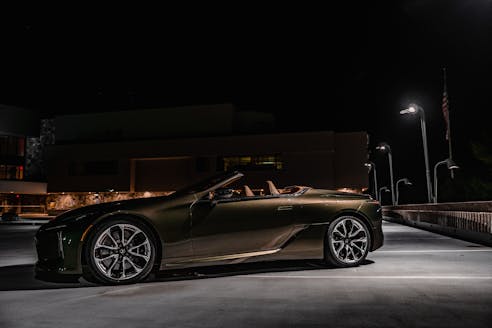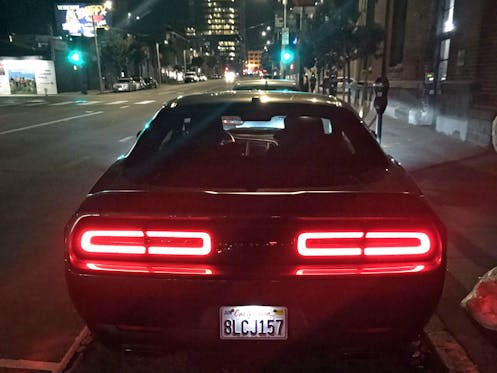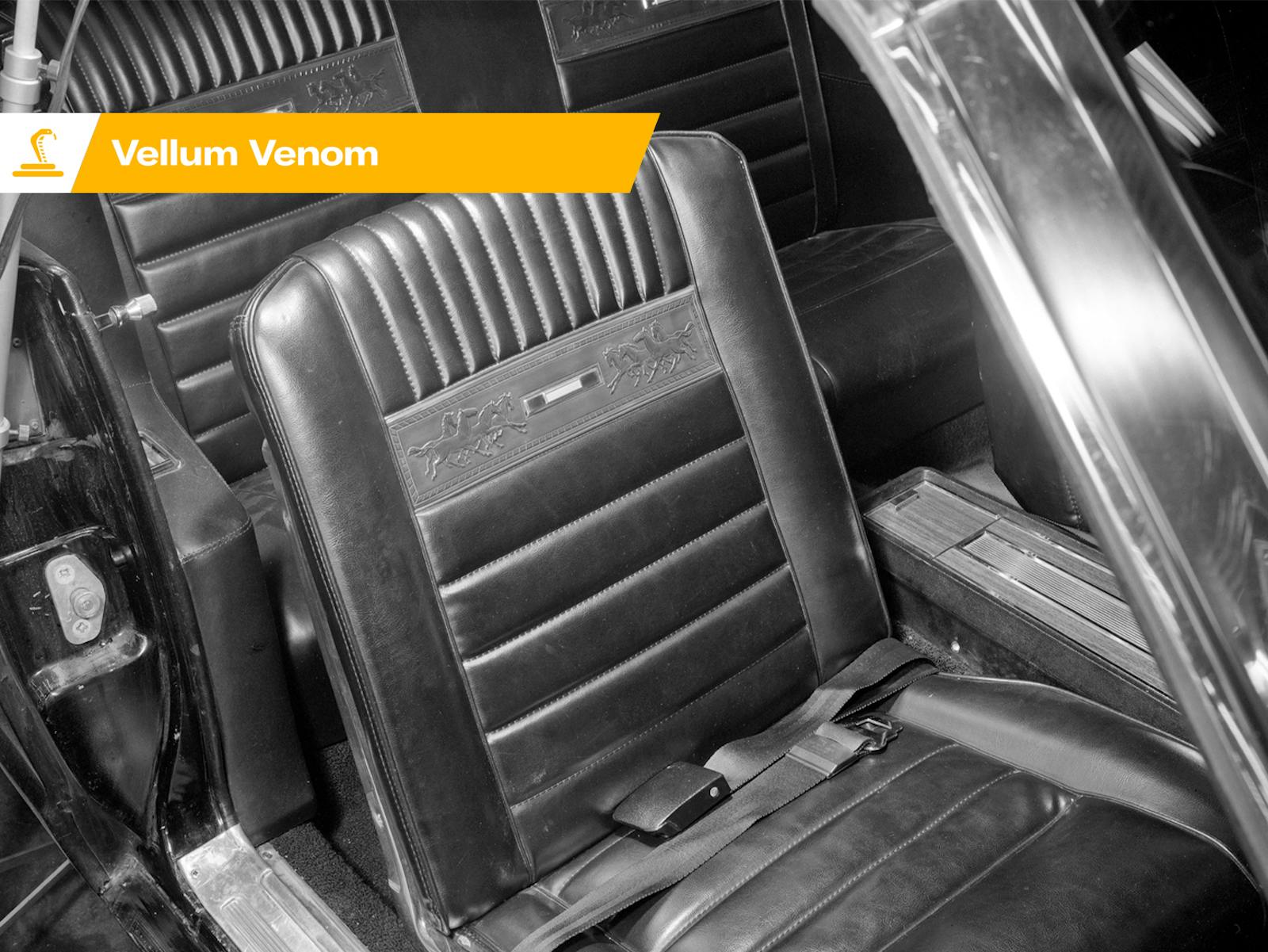Vision Thing: The best-designed vehicles on the market today
I’ve had the privilege of writing Vision Thing for you for a little while now, and although we’ve covered a lot of ground in car design, there’s much still uncovered. It occurred to me the other day when I was showering: I haven’t really given you an insight into which cars I think have a really standout design—and why.
(You never know when these thoughts are going to hit you; this why you should always carry a notebook. Probably not into the shower, though.)
This time of the year, there are a lot of list articles about, and I’m not one to leave a bandwagon un-jumped on for my readers’ sakes. I know I’ve mentioned a few tangentially both above and below the line, but I will now wheel my own opinions out into the harsh glare of the studio strip lights for a design critique session.
What follows then, is a brief list of standouts currently (or soon to be) available to buy, each of which should make a sizable dent in your kid’s college fund. If you’re thinking about any of these and need an excuse to take to the finance committee, tell them a professional said each is a future design classic.
Lexus LC 500

Sometimes a manufacturer struggles with a design language for years, trying to make it work over several different models, before finally the right canvas comes along and it all suddenly makes sense.
Cadillac tried for years with its Art & Science philosophy before finally nailing it on the 2013 ATS. The concept version of the Lexus LC, the LF-LC, showed us in 2012 what its L-finesse language was going to look like—swooping surfaces that twisted in all directions, a massive spindle grille.
It was fabulous.
Unfortunately, the first production Lexus sporting L-finesse clothes was not a big grand tourer but an urban crossover, the NX, which looked like it had been rolled down the stairs. The same story repeated itself with subsequent product releases, but when we got the LC 500 in 2017, it all came together (again) magnificently.
The height of the cowl above the bottom of the side daylight opening (DLO) is much higher than normal, but this allows the metal in front of the door mirror to roll smoothly to the horizontal to meet the hood. It lends the whole car an F1-style forward rake. The dimensions temper the aggressiveness.
Even the trademark spindle grille works in this application. Searingly modern and unmistakably Japanese, it looks like nothing else on the road.
The LC 500 feels like the kind of car Jaguar should be making if it had the daring. But to call the LC a Japanese Jaguar is to sell it short: Gaydon would never be this bold.
The LC 500 is probably my favorite new car on sale, if you’re stuck for something to get your favorite auto-design writer for Christmas.
Ford Maverick

At first, I didn’t totally get the Maverick, a small truck that wasn’t really all that rugged. There were plenty of options for pickup buyers already, although not at this price point.
Then it dawned on me. The Maverick is a direct replacement for the Focus. It’s even built off the same platform. A pickup for the non-traditional pickup buyer.
Suddenly, it all made perfect sense. Eschewing the overt brashness that characterizes basically every other open-backed vehicle on the market, the Maverick is a handsome vehicle with crisp detailing and surfacing that will take you to work without turning your spine to cookie crumbs, and be ready to get mucky on the weekend.
Arguably the Maverick’s best feature is that eye-catching MSRP: $23,690, as of this writing, for a 2023 model. You need a component catalog the size of Ford’s coupled with its economies of scale to get down that low. The strategy is clever as opposed to ruthless and cost-cut. There’s nothing you don’t really need—the base model even comes with old-fashioned steelies. When these become more widely available the aftermarket is going to wild with them, 3-D printers a-whirring.
A sensible, economical, good-looking, and practical commuter vehicle that happens to be a pickup? America, your 1980 Fiat Panda has arrived.
Toyota Prius

Okay. Hands up on who saw this coming? I certainly didn’t.
Toyota stunned everyone when it showed us the 2024 Prius in November. For four generations the Prius has been a worthy but polarizing car, bought by people who took conservation very seriously and wanted everyone to know it. A slightly unnecessary, aerodynamic hunch leant it the appearance of an oversized computer mouse. It was hardly the last word in style. Until now.
The whole part-electric powertrain deal no longer being a novelty (nearly every car on this list is available as a hybrid in one form or another), Toyota has wisely shed the yurts and yoghurt vibe and given us a Prius that no longer trades on economy but on looks. It’s like seeing the server you smiled at in Whole Foods dressed to kill in a swanky downtown cocktail bar.
Squints hard. Prius, is that you?
It’s a much lower, wedgier car for 2024. The high point of the roof has been pulled right back to the rear passenger compartment, which in this or any segment is unheard of. This allows the cant rail to dive seamlessly into the A-pillar.
Volume has been added into the hood at the center line, and the abrupt cut-off tail of previous versions toned down considerably. This no longer feels like a car that places economy above all other considerations, and in sign of growing design confidence, Toyota have cheekily referenced the Ferrari SF90 front headlight graphic.
Surprised? I dropped my wheatgrass smoothie.
Lincoln Navigator

About a year ago my Range Rover Sport slipped into my life. About a day later, off it went into my heart. I bonded with it in a way I never did with my previous daily, an Audi TT.
“Designers are all style over function,” my ass!
Even though mine is a 2011, the Range Rover still has a regal on-road presence and is full of thoughtful touches (and one or two infuriating ones, such as no rear-passenger compartment lighting!). It simply goes about its business quietly and competently. No, I don’t take it off-road, but have you seen the state of the nation’s tarmac recently? I’ll take that day-to-day isolation, thanks.
Ford has not been averse to lifting Range Rover design cues for its bigger SUVs in the past, but with the Navigator, released in 2018 and refreshed last year, Lincoln has a model that can go head-to-head with Gaydon’s best. Look hard enough, and you can see a little modern Range Rover in the Navigator’s body-side surfacing—that’s a compliment, not a demerit. This is domestic luxury that need apologize to no one.
To get a measure of how good the Navigator is, consider that Jeep had a free field goal with the new Grand Wagoneer—and missed it by miles. The Navigator’s wrap-around glazing DLO looks classy, all of a piece and fittingly expensive. The Wagoneer’s body-colored pillars, the exact opposite.
Decorated with just the right amount of chrome, the Navigator exudes American class and authority without going over the top, something that hasn’t always been true of high-end domestic cars in the past. I actually saw a photo of a Navigator in central London recently (probably a diplomat’s car) and you know what? It didn’t look out of place one bit.
As designers we have to accept that customers like SUVs and these days they are willing to trade the last couple of mpg to drive them. To that end, the Navigator doesn’t have a V-8. These cars will continue to exist, so we must make them as safe and fuel-efficient as possible. That they generate good profit margins and support American jobs is something to be celebrated as well.
Ferrari 296 GTB

So we finally got the V-6 baby Ferrari that’s been rumored for who knows how many years. Except it’s not really a baby at all, slotting somewhere into the middle of Maranello’s ever more-confusing range. No matter. The 296 is simply the best-looking Ferrari in an absolute age. It is gorgeous.
That’s not something that can be said of many recent efforts from chief designer Flavio Manzoni. Although generally good in profile and proportion, his vehicles have been extremely complex in the detailing. Surfaces desecrated with nicks and cuts, awkward lamp graphics, and, in the case of the rather plain Roma, the best car Aston Martin never made. Ferrari’s been twisting the marque in knots to create ever more-special editions and even now an SUV.
This is important. Ferrari’s rivals at McLaren have been hampered by spinning a range of indeterminate models off of the essentially the same kit of parts; the carbon-fiber cell and the 3.8-liter twin turbo V-8. Maranello shouldn’t have this problem, given the range of engines and layouts at its disposal: You should know straight away if you’re looking at the mid-engined, entry-level V-8 one, the front-engined, V-12 GT one, whatever the range topper is, and so on. Recently, that hasn’t been the case for Ferrari. At a car show in the fall, a designer friend and I were standing behind an SF90 wondering if we’d got the model designation right.
The 296GTB is a refreshing return to a classically beautiful aesthetic that belies the technical complexity beneath. The nose has one wide, mesh-filled opening, flanked by two smaller air curtains on each side and a smaller, lower central one. It’s simple without being simplistic, an attitude which is very hard to get right. The hips’ air vents are models of restraint, impressive given what the airflow requirements of this thing must be. Rather than punch more holes in the rear body work or increase the size of the rear lights, the rear fog and reflectors are brilliantly and subtly incorporated into the upward surface of the diffuser.
Minimalist without being minimal, this is one of those cars that can only be ruined by the inevitable go-faster version with tacked-on aero kit. What was I saying about that Lexus?
Honorable mentions: Land Rover Defender

It’s been with us for three years. Was it what we expecting? The evergreen original combined Blake’s Satanic mills with British sheer bloody-mindedness. We were never going to get a newer version of that. The workhorse role it was designed for has long since been taken over by base model pickups and ATVs, so how to keep this most beloved nameplate relevant?
By creating a frighteningly modern-looking, tough, capable SUV that, in lower trims at least (get the steel wheels!), maintains some of the class transcendence that characterized the original. The Defender looks like nothing else on the road and shows up the Ineos Grenadier up for the fool’s errand it is.
Honorable mentions: Alfa Romeo Giulia

I would have put the Mazda6 here, because it remains for me the blueprint for a mid-market sporting saloon, but that body is now ten years old. (It’s also no longer available domestically.)
When I first saw the Giulia, my reaction was Alfa Romeo should have had the Mazda in Alfa Centro Stile as inspiration instead of whatever they did use. But if ever a car looked better in the flesh than photos, the Giulia is it.
Just refreshed for 2022, it was famously crash-designed and developed by a dedicated tiger team after Sergio ordered a do-over. Little wonder that initial cars had teething problems. But it’s one of those cars that makes pause and smile every time I see one out on the road. Tautly organic, faintly muscular, and delicately detailed, the Giulia makes its German rivals look decidedly ordinary.

I purposely didn’t mention the Dodge Challenger in this list, because if you’ve kept up with my columns, you’ll know my feelings for that particular slice of Mopar design brilliance. Truth is, there are a lot of decent-looking vehicles available for sale right now. Not everything needs to be a design revolution or market disruptor—sometimes getting the basics right, and being solidly handsome, well-marketed, and ably developed is enough.
Hopefully these will give you some inspiration for the January sales (if such a thing will happen in today’s weird new-car market). If not, next time, I’ll tease you with some of my design choices that you can’t buy.
Check out the Hagerty Media homepage so you don’t miss a single story, or better yet, bookmark it.



Adrian, thank you and Happy Holidays to you and Hagertys
The Lincoln Navigator would do it for me, followed closely buy the Alfa and in third place the Prius, finally a
design that makes more sense than previous iterations.
Thank you for taking the time to read and comment, and best wishes to you and your family for the holidays as well.
Design classics huh? Surely you jest.
Ford truck over a Corvette C8?
LC500, for certain.
I appreciate that you didn’t go with the standard vehicles that seem to always be chosen as the car that will make a difference. Many ridicule you about the inclusion of the Maverick. An ugly truck? Really, is there a beautiful truck? Also, the other trucks in the comparison are bigger, more ‘trucky’ and not necessarily what people need, or really want. Most people never use the back bed of their truck. Those who do, carry a mountain bike, sometimes some trash, some lumber – all of which I do with a BMW wagon. I.e. – I need some utility of a truck but really want something that drives and handles like a car. Those who actually haul stuff and tow stuff know what they need so the Maverick isn’t really ever considered for them. I agree, the Ridgeline is also the perfect truck for 90% of the people that own trucks, but it is still bigger like a full-size. The cute Santa Cruz is truly the Ranchero of the bunch with a bed that barely holds a mountain bike. In short, I believe the Maverick is the truck the fills the niche that the small trucks of yesteryear use to fill.
I do wonder what will happen with the Prius (Pious) faithful? I think the new car looks great – never, in a million years would the words Prius and nice looking be in the same sentence, but they are now. I wonder if the number of people who will now buy the car because it looks normal will outweigh the number of people who currently own a Prius but won’t now because they are normal looking. Not very virtue signaling if the car doesn’t look strange and stand out in a crowd. Time will tell. My gut though, the Prius moniker will still turn people off no matter what the car looks like because of the stereotype of the car. The number of people who love the stereotype of owning a Prius will not purchase another one because, as I just noted, it is too normal (think Saab buyers). I believe sales of the Prius will decline. You heard it first, it will be wrong, but you did hear it first hear!
Mr. Clarke,
Yours was a very enjoyable compilation as I found myself agreeing, applauding your choices for this article. The LC500, for example, hit me instantly when it was introduced. Sitting in an example at a car show, It also felt like a cockpit, yet with suede. Some impressions leave an imprint.
Cheers
Junk chevy trucks will never be collectable!